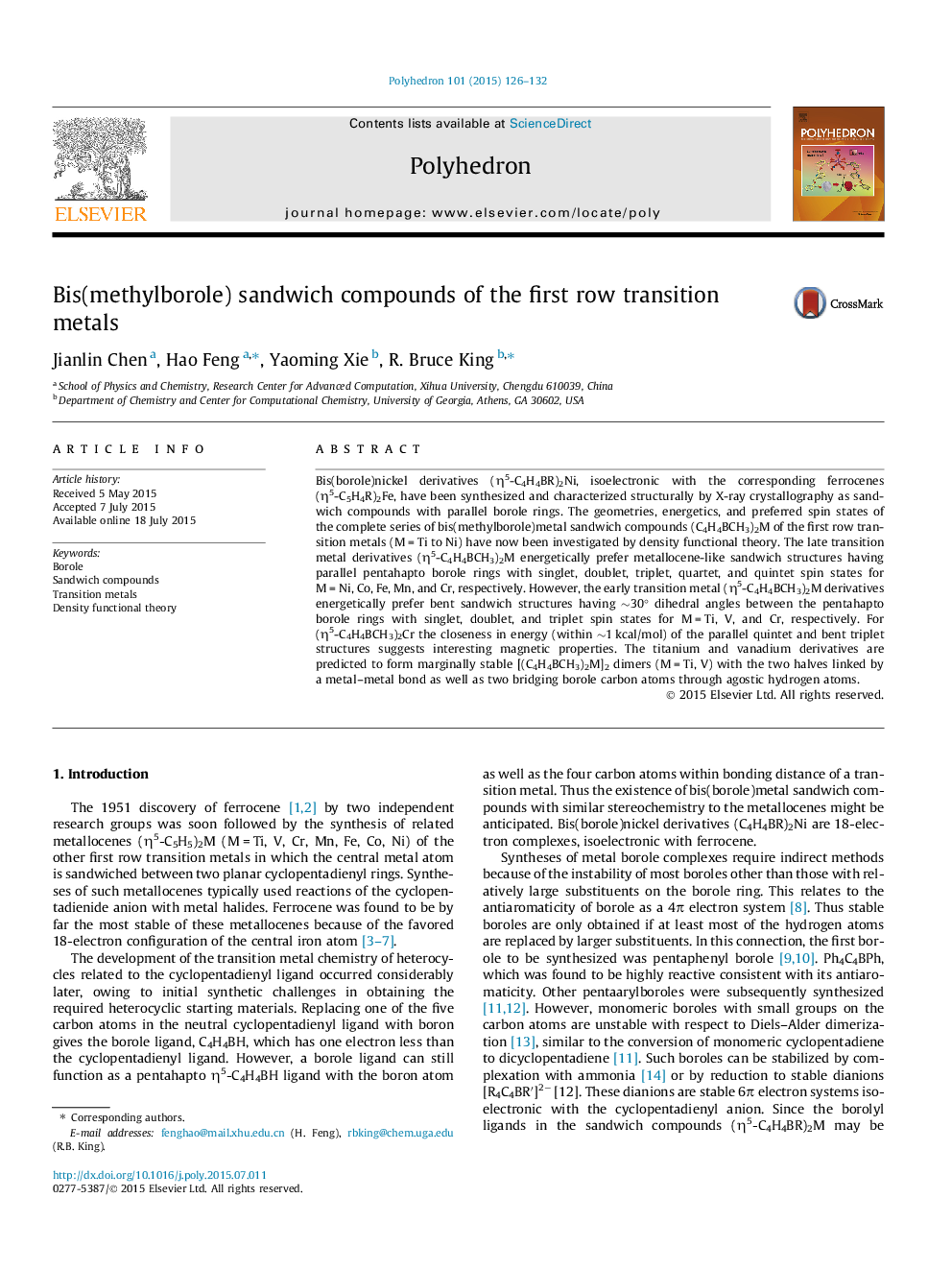| Article ID | Journal | Published Year | Pages | File Type |
|---|---|---|---|---|
| 1336824 | Polyhedron | 2015 | 7 Pages |
Bis(borole)nickel derivatives (η5-C4H4BR)2Ni, isoelectronic with the corresponding ferrocenes (η5-C5H4R)2Fe, have been synthesized and characterized structurally by X-ray crystallography as sandwich compounds with parallel borole rings. The geometries, energetics, and preferred spin states of the complete series of bis(methylborole)metal sandwich compounds (C4H4BCH3)2M of the first row transition metals (M = Ti to Ni) have now been investigated by density functional theory. The late transition metal derivatives (η5-C4H4BCH3)2M energetically prefer metallocene-like sandwich structures having parallel pentahapto borole rings with singlet, doublet, triplet, quartet, and quintet spin states for M = Ni, Co, Fe, Mn, and Cr, respectively. However, the early transition metal (η5-C4H4BCH3)2M derivatives energetically prefer bent sandwich structures having ∼30° dihedral angles between the pentahapto borole rings with singlet, doublet, and triplet spin states for M = Ti, V, and Cr, respectively. For (η5-C4H4BCH3)2Cr the closeness in energy (within ∼1 kcal/mol) of the parallel quintet and bent triplet structures suggests interesting magnetic properties. The titanium and vanadium derivatives are predicted to form marginally stable [(C4H4BCH3)2M]2 dimers (M = Ti, V) with the two halves linked by a metal–metal bond as well as two bridging borole carbon atoms through agostic hydrogen atoms.
Graphical abstractThe late transition metal derivatives (η5-C4H4BCH3)2M (M = Ni, Co, Fe, Mn, and Cr) energetically prefer sandwich structures having parallel pentahapto borole rings. However, the early transition metal (η5-C4H4BCH3)2M derivatives (M = Ti, V, Cr) energetically prefer bent sandwich structures having ∼30° dihedral angles between the pentahapto borole rings.Figure optionsDownload full-size imageDownload as PowerPoint slide
